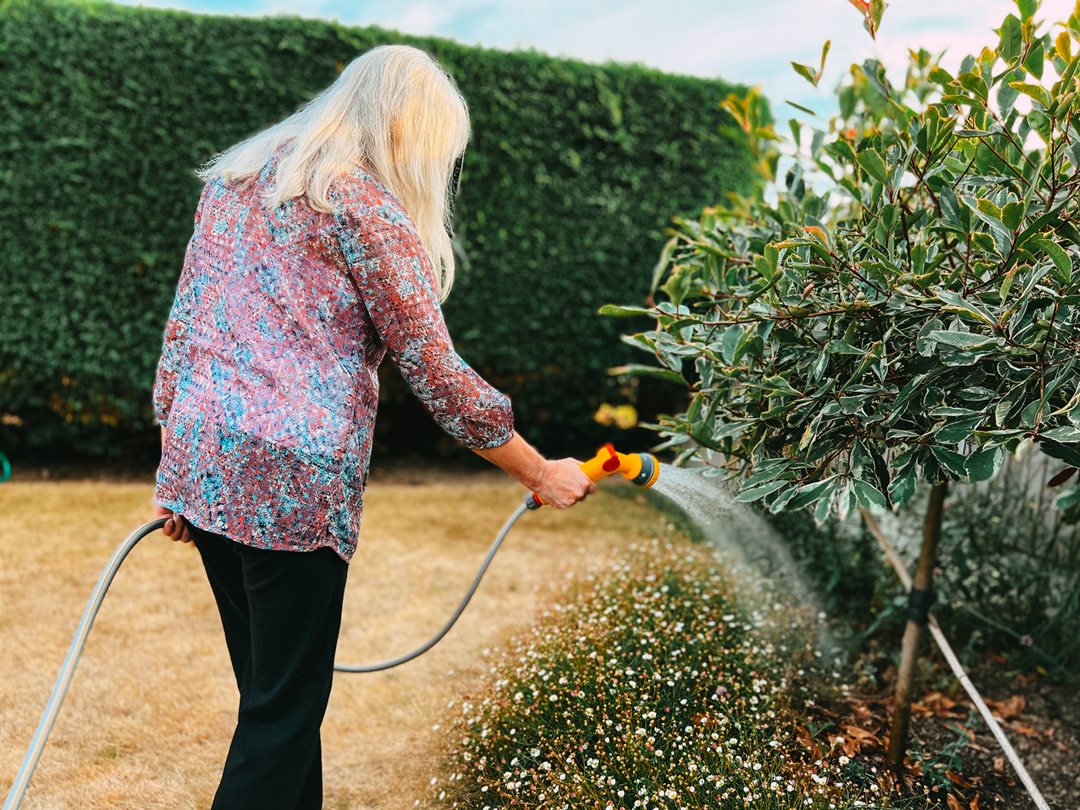Tips for reviving a dry lawn | PEMCO
 Raise your hand if you own one of the houses on the street who's lawn has slowly been turning from a vibrant green color to a...well...dry and muted shade of sandy beige.
Raise your hand if you own one of the houses on the street who's lawn has slowly been turning from a vibrant green color to a...well...dry and muted shade of sandy beige.
Hey, no judgement from us! We get it. During heat waves, green lawns not only take time and maintenance, but a lot of water!
However, we've got a different perspective to share that goes beyond the aesthetics of your home and landscaping. Did you know a green lawn also adds a fire-protective buffer around your home, helping to protect your property as fire season approaches? Healthy lawns also help control runoff once summer ends and we transition into wetter months. Green lawns even can discourage property crime, since burglars are less likely to target homes that appear meticulously maintained.
Many Northwest lawns may be crisping up after we recover from the hottest-ever June on record. Could the rest of summer be a great opportunity to get your lawn back in shape? Read on to learn more...
Is your lawn dormant or dead?
It's not always easy to tell. Gardening experts say try the "tug test." Grab a handful of grass and pull. It if comes up easily, it's dead. But, if you feel quite a bit of resistance, it's probably dormant. Another clue: If the color looks fairly consistent (that is, straw colored over a large area) rather than mottled patches (green clumps amid the brown), it's likely dormant.
Restoring your lawn to a well-maintained appearance
If your lawn is dormant, seasonal rain and a nudge of fertilizer will revive it. But if it's mostly dead, you'll need to overseed – a mini-version of planting a whole new lawn. This should not be done until the bulk of our hottest season is over, typically around the end of August or into September.
Here's how:
- Start with dethatching to remove the dead grass. Use a rake if the area is small, a power thatcher if it's large. You want to make sure the new grass seed will have good contact with the soil.
- For hard-packed soil, you may want to go a step further with core aeration that removes plugs of soil from your lawn so water can soak in and seeds can more easily take root. (You can rent both power thatchers and core aerators at your local garden center.)
- Mow the lawn shorter than normal to help ensure good seed-to-soil contact.
- If you're unsure about your soil's condition, buy a test kit at your garden center to determine its pH. It may benefit from an application of lime to hit that perfect balance (6.0 to 6.8) before seeding.
- Apply a thin layer – only about 1/8 inch – of peat moss as a top dressing to help hold moisture and improve germination.
- Buy the right blend of seed. With Washington and Oregon's microclimates, there's no one-size-fits-all formula (ask your garden center for advice). In general, buy the best seed you can afford (nothing less than a germination rate of 85% and a mixture that's tested 99% weed free). Overseed in a crisscross pattern and rake lightly afterward to settle the seeds into the peat moss.
- Apply an organic fertilizer. (Your earlier soil test, along with the experts at your garden center, can help point you to the right formula.) You also can look for fertilizers labeled as "starters."
- Keep the new sections damp while seeds sprout. If rain is spotty, you'll need three or four light daily sprinklings until you see new grass. Then, you can gradually increase intervals between waterings to encourage the roots to grow deeper into the soil.
Lawns don't always come in evenly, so you may need to repeat steps 6 and 8 to get the last stubborn patches to come in.
When should I re-seed my lawn?
When the weather begins to cool down (but the grass is still growing), and we see the first glimpses of rain--it's a great time to overseed any bare spots or thin spots. If you miss your end of summer/early fall window, the next best time is spring.How can a green lawn help protect against wildfire?
A moist, green lawn will be more resistant to flames than one that is dry. The drier a plant or shrub (including grass), the more likely it is to catch fire. If your lawn is still green after our recent heatwave, consider keeping up with the maintenance, especially if you're in a wildfire-prone zone. Your damp, healthy lawn will help create a protective buffer around your home.
Stay cool and stay safe this summer!
Share on social media